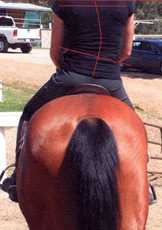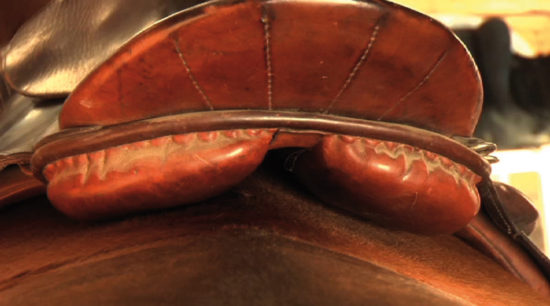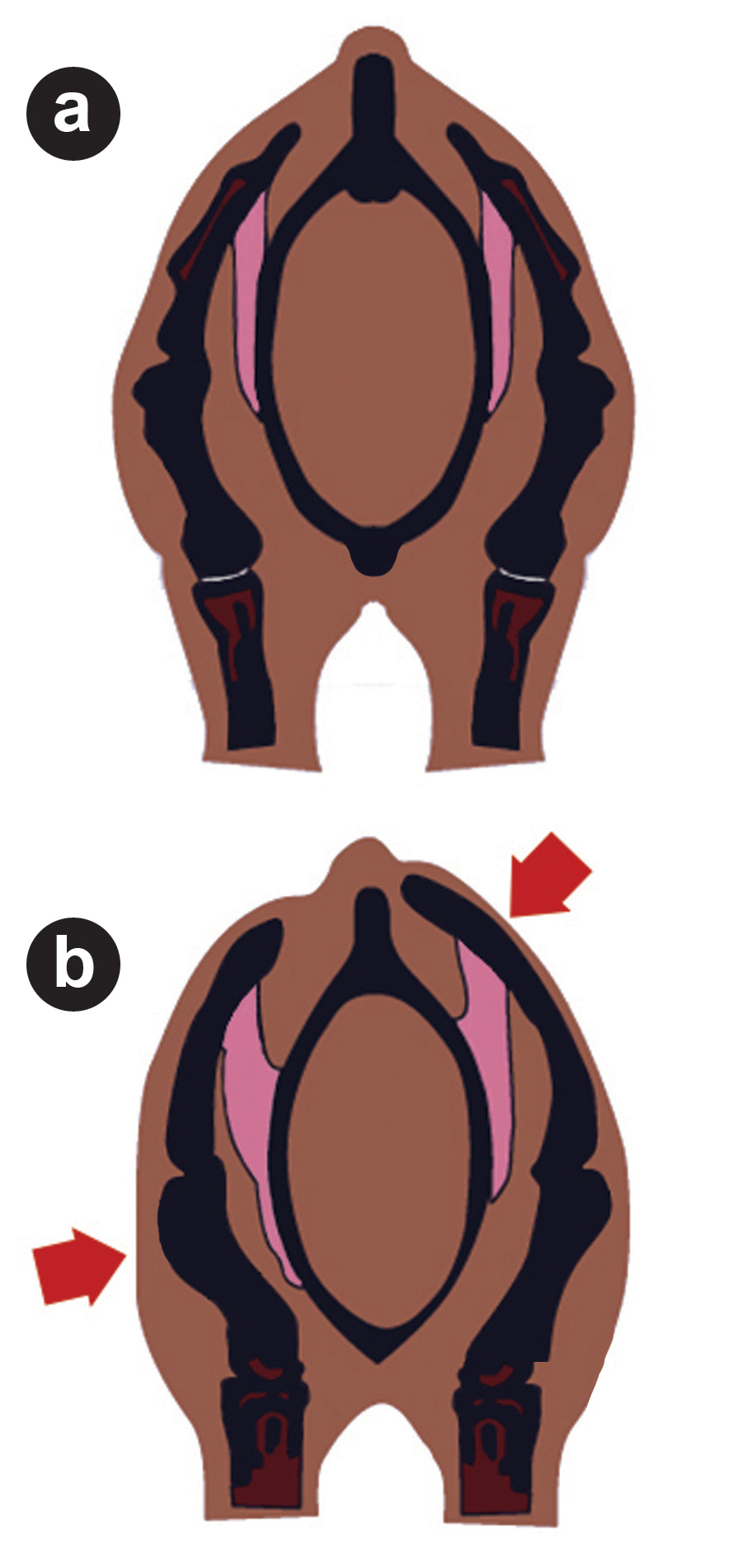Saddle Fit and Straightness – Tip 6

Straightness
One of the things I see often – even with professional riders – is that the rider is not sitting straight on the horse (especially obvious when you see the rider from behind!). You will find good examples of this in almost any equestrian publication.
Do you often have to step into one stirrup while riding to center your saddle on your horse’s back? This could mean that your saddle does not sit straight on your horse’s back. Straightness means that the center of the saddle is in alignment with your horse’s spine. Sometimes, a saddle that appears straight when the horse is standing in the crossties will shift to the right or left when the horse is being ridden. A saddle that falls or twists to one side can lead to problems with your horse’s SI (sacroiliac) joint; if the saddle shifts to such a degree that the panels rest on the horse’s spine, this can lead to the kind of irreversible long-term damage mentioned in previous posts.
The best way to determine if your saddle falls or twists to one side while your horse is being ridden is to do a dust pattern ride and analysis. Without brushing your horse’s back, tack him up and ride him on a 20-meter circle in each direction at the walk, trot, and canter. Carefully lift the saddle off of his back, trying not disturb the outline left by the saddle’s panels. Have your horse stand square. Stand behind your horse to have a clear view of the top of his back. Look at the dust pattern. Was your saddle sitting nice and straight on your horse’s back? Or did it fall to the right or to the left? If you are uncertain, take a tape measure and measure the distance from the center of your horse’s spine to the outside of the rear panel on each side. If the saddle falls to the right, which is most common due to the usual somewhat greater musculature on the left, the measurement from the center of your horse’s spine to the outside of the right-hand panel will be bigger.


What causes a saddle to fall to one side of a horse’s back? Horses are by nature uneven. The overwhelming majority of horses are not built symmetrically through their shoulders. In my 35+ years of working as a saddler in the industry, my technicians and I have measured over 150,000 (!) horses on pretty much every continent (except Antarctica). Most of these horses (probably around 70%) had a left shoulder that was larger and more developed than their right shoulder; only a small percentage were totally even. Whether a horse is left – or right-side dominant can result from the way it was positioned in utero, and/or from which leg is forward when the horse grazes, and/or from the way the horse has been trained. Sometimes a saddle falls to one side because the gullet/channel is too narrow and/ or the tree width or tree angle (to be discussed in future blogs) is not correctly adjusted for the horse. The larger shoulder kicks the saddle over to the other side.
A rider who sits unevenly for whatever reason can compress the stuffing more on one side of the saddle, and drag it over to that side. If you have determined that your saddle does not sit straight on your horse’s back, it is important to determine the cause and resolve the issue in order to avoid causing long-term damage to your horse. There was a recent study that I wrote about last year through the Saddle Research Trust that concerned saddle slippage and lameness – the consensus was that lameness causes saddle slippage but I am more inclined to think the causative relationship goes the other way.
©2016 Saddlefit 4 Life® All Rights Reserved
